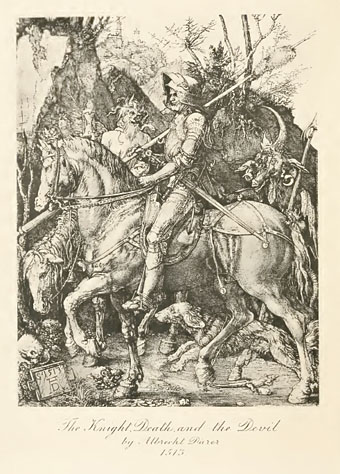
More Sullivan, the illustrations this time being for a 1908 edition of Sintram and His Companions by Friedrich de la Motte Fouqué. This is one of Fouqué’s lesser known works, a tale of a Norwegian knight which the author based on the famous etching by Albrecht Dürer, The Knight, Death and the Devil (1513). The etching is shown as a frontispiece which Sullivan then has to follow, not an enviable task for any artist. If the subsequent drawings can’t match Dürer’s meticulous rendering they nonetheless base their characters on Dürer’s figures, the dog included. This kind of repurposing is commonplace today but it was very uncommon in 1908, and offhand I can’t think of an earlier example. It’s also worth noting the discussion in the comments for yesterday’s post about the influence of Edmund J. Sullivan on the young Austin Osman Spare. Sullivan and Spare knew each other, and Phil Baker’s Spare biography mentions Sullivan’s work being an influence, but I’d not given the matter much attention until this week. The influence is easy to see when you view their drawings together.
To return to Dürer, the sight of his etching always makes me think of a later piece of fiction, A Dog in Dürer’s Etching “The Knight, Death and the Devil” (1966) by Marco Denevi. A short tour-de-force that may be read in full here.
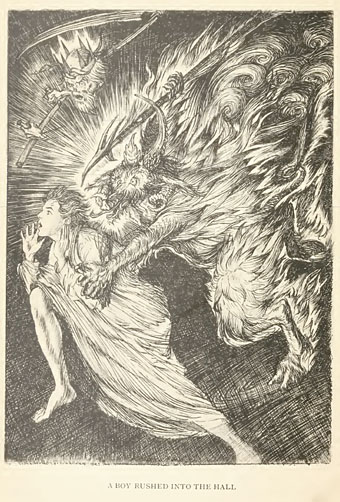
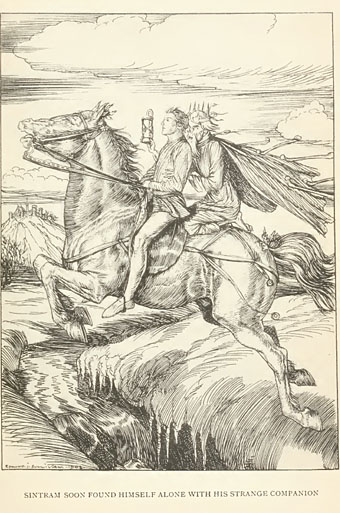
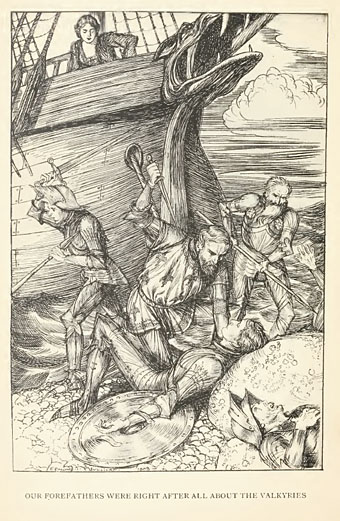
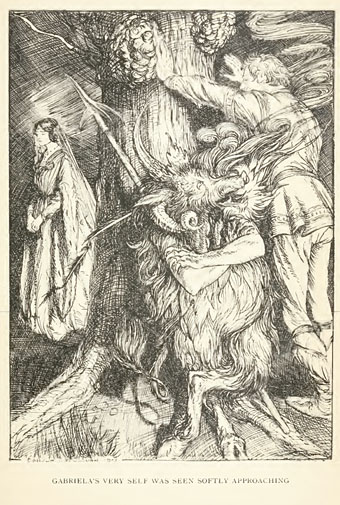
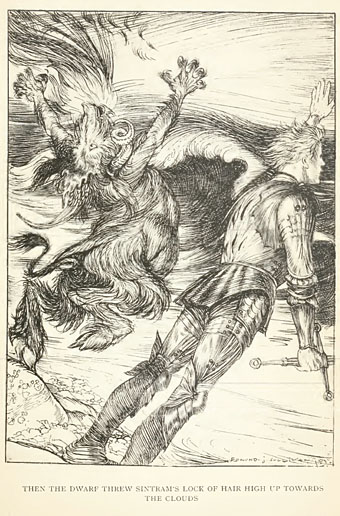
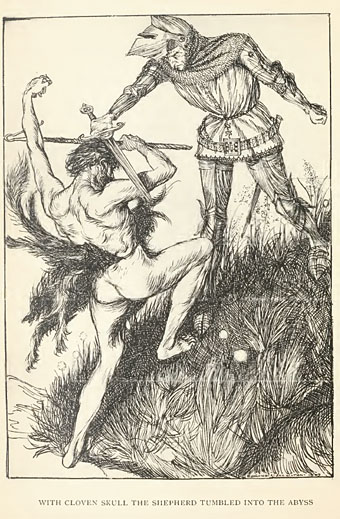
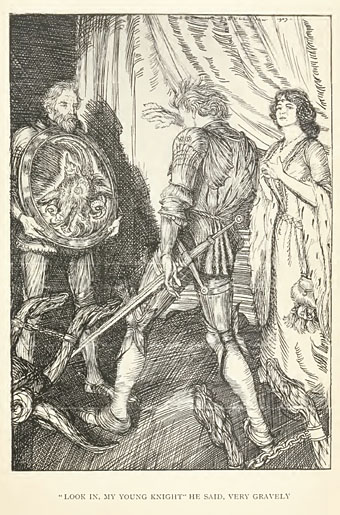
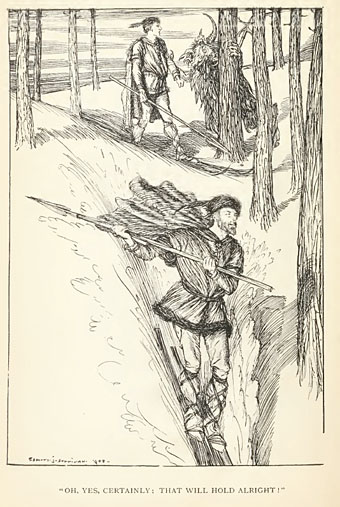
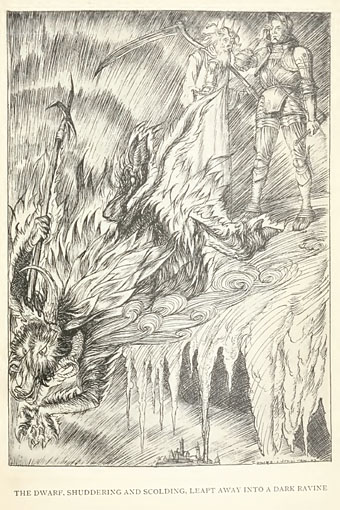
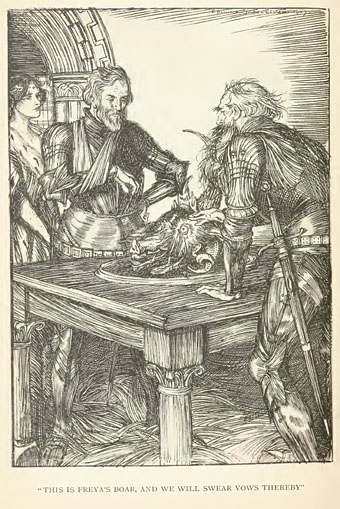
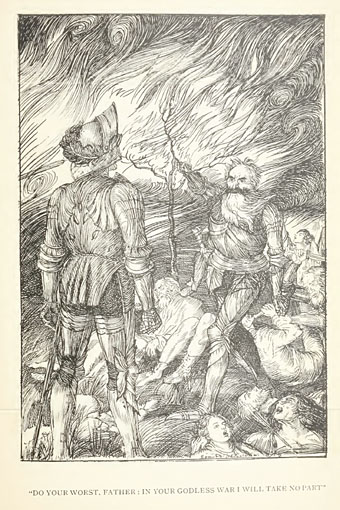
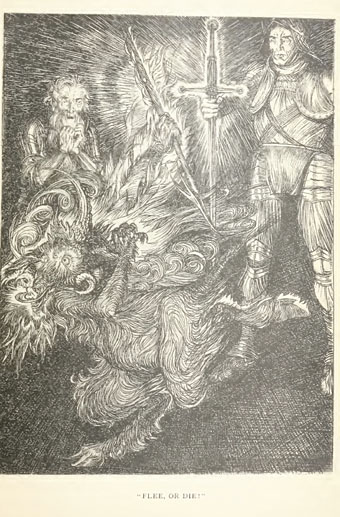
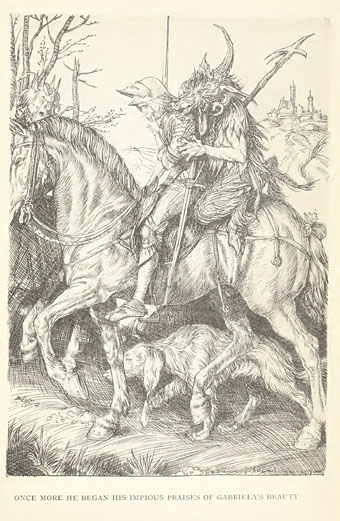
Elsewhere on { feuilleton }
• The illustrators archive
Previously on { feuilleton }
• Edmund J. Sullivan’s Rubáiyát
• Dürer’s Instruction of Measurement
• Eustace details
• Melencolia details
• Albrecht Dürer’s Triumphal Arch

Just as you said, matching Dürer’s rendering was a nearly impossible challenge, and Sullivan did impressively well with this.
Speaking of influences, to me it seems there’s also some proximity with Rackham’s pen-and-ink technique.
Sadly, it seems that this book is rather hard to find?